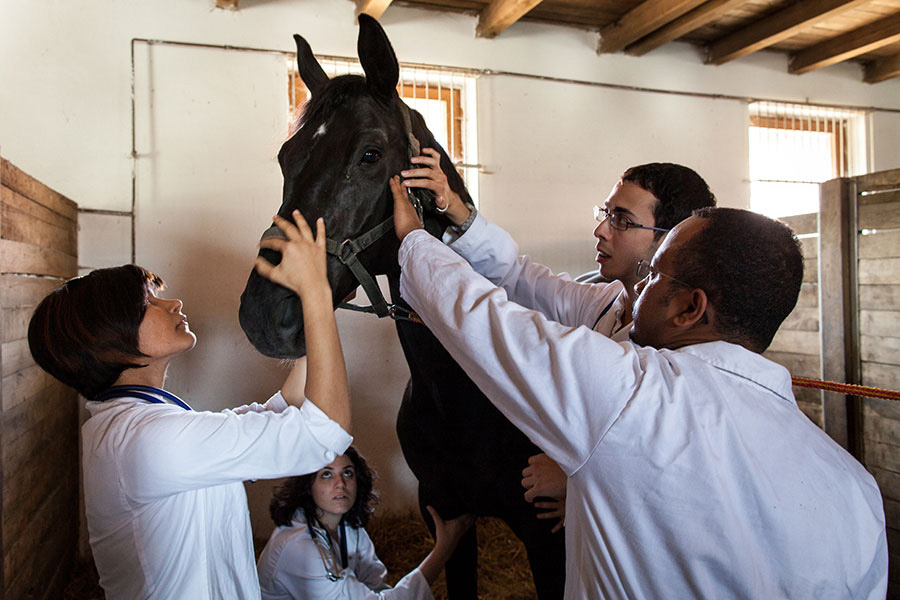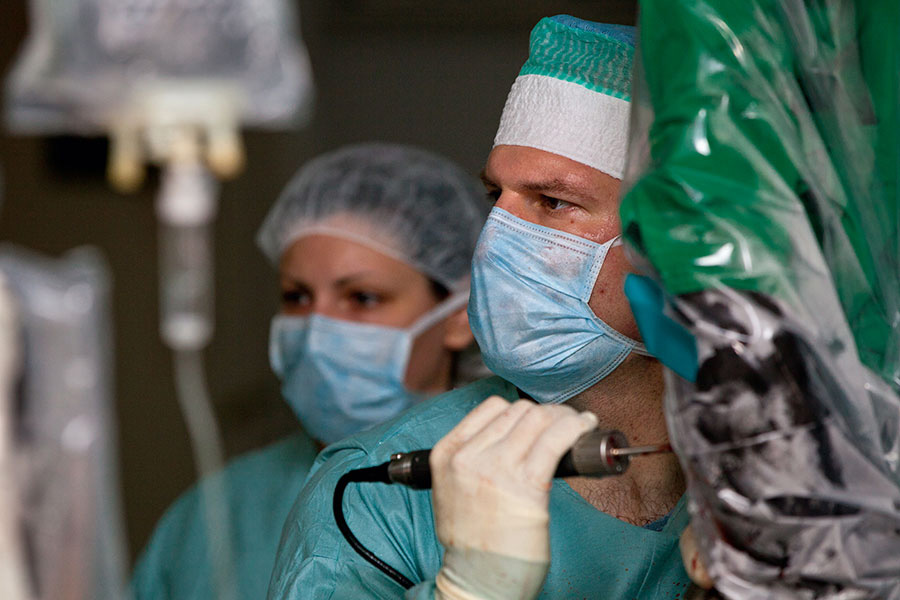Practising veterinary medicine is essentially a manual occupation; attaining proficiency in it requires a lot of practise – hence the role of practical training is of overriding importance. Reflecting on these thoughts in the early 90’s, the leaders of the University of Veterinary Science (the legal predecessor of the Faculty of Veterinary Science of the Szent István University), reached the resolution to adapt the Hungarian veterinary science curriculum, with its 215-year history, to the requirements of the approaching 21st century.
 Beside the preservation of the traditionally high-standard of theoretical tuition, the practical training, and the improvement in the provision of animal health services, were also set as particularly important targets. For this, the Alma Mater area, because of its inner-city location, was no longer suitable. Following numerous coordinating meetings, the leadership of the University of Veterinary Science decided on the construction of a new clinic on its Dóra major property near Üllő, which would meet the future requirements for the medical treatment of horses and other livestock.The 4 ha area immediately adjacent to the Dóra major Research Farm (legal predecessor of the Teaching Farm), because of its proximity to the capital (approx. 35 km) and easy accessibility, promised to be an ideal location. The placing of the foundation-stone for the new institution, on the 25th November, 1994, was followed by the official opening ceremony on the 7th September, 2001. The function of the Üllő Large Animal Clinic is to conduct courses in Hungarian and English, at both a basic and a post-graduate level, in the theory and practice of medicine on horses and other livestock. Within this framework, to mesh the prophylactic and the healing approaches to medicine; and to provide a high-standard clinical, livestock-related medical and specialist advisory service for farmers engaged in animal husbandry – always bearing in mind pedagogic obligations, and the possibility of incorporating overseas clinical research on livestock. In addition to their tuitionary/teaching role, the veterinarian staff provides a full first-aid and emergency service for stock-owners, in the areas of internal medicine, surgery, ophthalmology, obstetrics and reproductive biology.
Beside the preservation of the traditionally high-standard of theoretical tuition, the practical training, and the improvement in the provision of animal health services, were also set as particularly important targets. For this, the Alma Mater area, because of its inner-city location, was no longer suitable. Following numerous coordinating meetings, the leadership of the University of Veterinary Science decided on the construction of a new clinic on its Dóra major property near Üllő, which would meet the future requirements for the medical treatment of horses and other livestock.The 4 ha area immediately adjacent to the Dóra major Research Farm (legal predecessor of the Teaching Farm), because of its proximity to the capital (approx. 35 km) and easy accessibility, promised to be an ideal location. The placing of the foundation-stone for the new institution, on the 25th November, 1994, was followed by the official opening ceremony on the 7th September, 2001. The function of the Üllő Large Animal Clinic is to conduct courses in Hungarian and English, at both a basic and a post-graduate level, in the theory and practice of medicine on horses and other livestock. Within this framework, to mesh the prophylactic and the healing approaches to medicine; and to provide a high-standard clinical, livestock-related medical and specialist advisory service for farmers engaged in animal husbandry – always bearing in mind pedagogic obligations, and the possibility of incorporating overseas clinical research on livestock. In addition to their tuitionary/teaching role, the veterinarian staff provides a full first-aid and emergency service for stock-owners, in the areas of internal medicine, surgery, ophthalmology, obstetrics and reproductive biology.
The medical treatment is supported by up-to-date:
- laboratory analyses (blood count ,bio-chemical parameters, parasitological and cytological examinations, blood gas analysis, blood clotting and sperm examinations), and
- diagnostic equipment (digital X-Ray, computer-tomograph, arthroscope, „AO” equipment for setting broken bones, EKG, ultrasound, video-endoscope, treadmill).
The close to 1500 sqm hospital area comprises:
- two surgical operating theatres
- a medical examining room,
- an obstetric examining room
- a laboratory, and
- an image-processing facility.
The animals can be housed in four stables, in individual stalls.
 With these facilities we’ve become one of the best equipped institutions in Central-East Europe.
With these facilities we’ve become one of the best equipped institutions in Central-East Europe.
Four of our staff at the Large Animal Clinic have already attained an European „specialist” degree, and a fifth only has the last examination to pass – which clearly indicates the high standard of the work performed at the Clinic.

